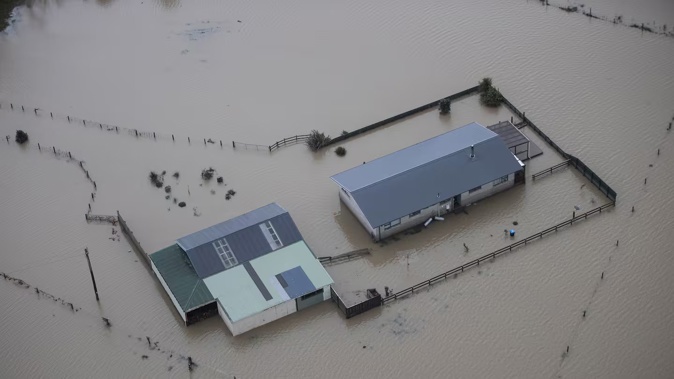
Global warming is forcing scientists to redefine what New Zealand’s “normal” climate is - as a separate analysis suggests what it could eventually mean for our wettest and driest days.
Our average temperature has warmed by more than 1.1C within little over a century, with scientists observing fewer frosts, shrinking glaciers, more hot days and intense downpours bearing a climate change handprint.
Amid a slew of other broken climate records, our last three years proved New Zealand’s hottest in recorded history.
Under internationally-set guidelines, Niwa has long used 30-year baselines to calculate “climate normals” – its current yardstick is 1991-to-2020 – which are updated each decade.
But an ever-shifting climate has made it more challenging for Niwa scientists to define and discuss what “normal” really is in 2024.

This graph shows how normal average temperature we experience is now higher than it used to be - meaning Niwa has had to update its own "climate normal" baseline each decade. Image / Niwa
It’s also meant months with “below normal” temperatures are today exceedingly uncommon: last August was the first in 74 months to meet that colder threshold.
“Climate change means we are living with rapid shifts in global and regional climate patterns, so we need to better incorporate these variations when we calculate climate normals,” Niwa climate database scientist Raghav Srinivasan explained.
Human-driven warming wasn’t the only factor causing year-to-year swings in seasonal rainfall and temperature, as natural drivers like El Niño and La Niña could also have a big influence.
In a new study, Srinivasan and colleagues suggest that using additional “alternative normals” - such as baselines that could be updated each year – might better help reflect the current state of play.
“A good case study for New Zealand is that under current 10-year update cycle of the normals, the rainfall totals from Cyclone Gabrielle won’t be factored in until the early 2030s when the 2001-2030 normal becomes available,” Srinivasan said.
“With such extreme events expected to become more common, it would likely be advantageous to add more frequently updated normals to serve as a better reference for future events.”
It could also mean that today’s temperature difference from normal became less stark when compared with an older time period.

This graph shows how Niwa's "climate normals" have shifted over different regions as the planeyt has warmed. Image / Niwa
While the 12.1C mean temperature recorded in Auckland on June 21 was nearly a degree warmer than the average for 1941-1970, for instance, it was still on par with normal for 1991-2020.
In another study, meanwhile, scientists have used an expanded dataset to explore how climate change will influence New Zealand’s future wet and dry weather extremes.
It showed that, even in regions that showed little change in annual average rainfall, a world 3C warmer could bring 10 per cent more rain on their wettest days – and 10 per cent less on their driest days.
“This rule of thumb can serve as a powerful tool for people on the ground to plan for what an average year might look like on a day-to-day basis in the future,” said study author Dr Luke Harrington, of the University of Waikato.
“We find more extreme dry spells punctuated by increasingly supercharged rainfall events.

Scientists earlier estimated that climate change made rainfall in the 2021 storm that flooded Westport around 10 per cent more intense. Photo / George Heard
“These projected changes are further evidence of the challenges that will need to be confronted as global temperatures continue to increase rapidly.”
In those regions that were predicted to have significant changes in annual rainfall, meanwhile, the study suggested how that rain would arrive.
“For example, we see increases in the number of years with ‘drought-busting’ extreme rainfall yet at the same time as much as a three-fold increase in the number of extreme dry years,” said study author and Niwa climate scientist Dr Suzanne Rosier.
The analysis added to scientists’ understanding of what climate change held for regions in New Zealand, where places like the West Coast were predicted to grow wetter, while dry areas like Central Otago would see even less rainfall.
“A common phrase to explain climate change is ‘the wet get wetter and the dry get drier’,” said study author Professor Dave Frame, of the University of Canterbury.
“This normally describes wet regions of the world experiencing more rainfall in the future, while dry regions suffer more intense drought periods.”
Because we don’t expect huge changes in total rainfall, Frame said, Kiwis could get complacent about future rainfall challenges.
“This research shows we can expect the worst of both worlds to happen simultaneously for many regions of Aotearoa as temperatures continue to rise.”
Jamie Morton is a specialist in science and environmental reporting. He joined the Herald in 2011 and writes about everything from conservation and climate change to natural hazards and new technology.
Take your Radio, Podcasts and Music with you









